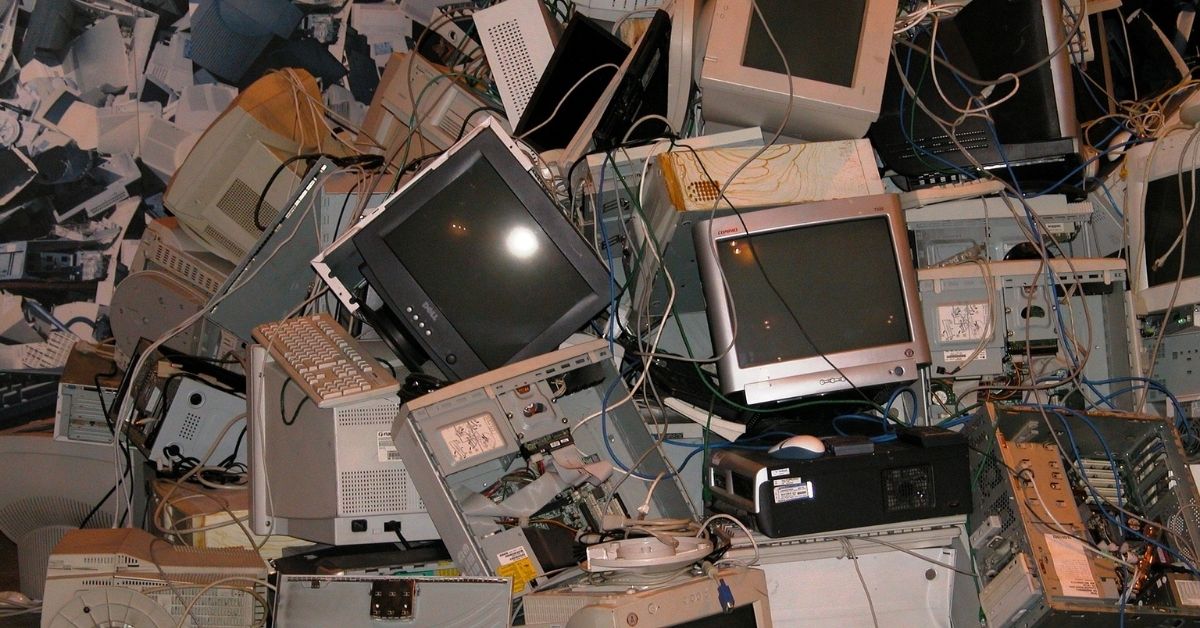This article has been sponsored by Cerebra Green
An old laptop, a phone with a broken screen or even headphones and chargers — every time we discard electronic items like these into the bin, a mountain of e-waste is created. A 2017 report by the Global E-Waste Monitor confirms that this is not an exaggeration. It states that India generated an annual e-waste of about 2 million tonnes and ranked among the top five e-waste producing countries.
If this wasn’t bad enough, in the next few years our numbers skyrocketed to an annual 3.23 million tonnes [2.9 million metric tonnes (MT)] of e-waste generation in 2020. This time India ranked third highest in generating e-waste, after the USA and China.
While these numbers claim to portray the real picture of the e-waste situation in India, Ravi Neeladri from Bengaluru-based Cerebra Green advises us to take it with a grain of salt.
“In a country like ours where the waste management sector is largely unorganised, a lot of transactions take place off the books. So, we might be generating a lot more than what’s being depicted by these statistics,” says Ravi, the CEO of Cerebra Green — the e-waste division of Cerebra Integrated Technologies Ltd.
Finding a Diamond in the Rough
A 32-year-old company, Cerebra’s journey to creating a sustainable solution has created a massive impact today.
“We used to be generators of e-waste. We were manufacturing PCs and servers in the late 80s and 90s. But with time we evolved and began to focus on electronic manufacturing services, like manufacturing printed circuit boards(PCBs) and that led to a sustainable shift in the outlook towards e-waste,” he says.
Like any manufacturing company, Cerebra too had manufacturing snags. Hence, the PCBs that did not meet the prerequisite standards of quality or defective pieces were discarded as rejected in the inventory. Over time the pile of e-waste in the inventory began to rise, making way for another revolution.
After several trials starting in 2016-2017 from their Peenya base, they finally started a collection facility in Narasapura, Kolar, in 2018.
“We realised that we were simply sitting on a huge pile of value disguised as e-waste. At Narasapura we started with recycling 2,136 metric tonnes (MT) per annum and now can recycle 40,000 metric tonnes (MT) of e-waste,” adds Ravi.
Stages of E-waste Management

To understand the stages of e-waste management, one needs to first understand the concept of ‘end of life’ of electronic products, says Ravi.
“Any electrical product that reaches its end of life is considered to be e-waste. But how do you determine what is the true end? To clear confusion, there are specific government norms to define the end of life for different products. For instance, smartphones have four years of life, a fridge has 10 years, a laptop has five years while a TV has nine years. But in reality, it doesn’t go this way because as a society we discard electronic products after they are completely unusable. Often the number of years of usage of a product exceeds the end of life time span,” explains Ravi.
However, once the electronic product is rendered unusable, post the end of life period and winds up as e-waste, it is collected by formal or informal e-waste collectors. Cerebra Green through its collection centres is trying to ensure that all the e-waste collected is accounted for at every stage.
Once the collection is done, it is transported to recycling centres where the waste is segregated and dismantled into various materials. “For instance, a TV’s plastic part is recycled into a plastic product or goes into road making. The mild steel, copper, or speakers, glass, magnets etc, also gets dismantled and then recycled through authorised recyclers,” he says.
The next step involves using these materials to make a finished product for final consumption.
From a product’s end of life to creating a new product out of its parts, Cerebra is involved at every step to ensure the valuable e-waste isn’t wasted and realises its full potential.
Guided by the principles of establishing a circular economy, they provide end-to-end services and even a warranty on recycled products. But Ravi is quick to point out that owing to the idea of a circular economy, for every e-waste collected, the first goal isn’t recycling but refurbishing. Only after the e-waste product is deemed unfit for refurbishment that it reaches the recycling units.
Embracing Refurbished Tech
“Our primary goal after the collection stage is to recognise the value in the e-waste and try to refurbish it to extend its life. Only when that is not possible do we move on to recycling. Through this we are encouraging customers—individuals, startups and large tech companies—to embrace refurbished products by providing end to end services,” says Ravi.
From delivery and installation of a new product, maintenance, to picking up the device after its end of life period and refurbishing it to extend life — they do it all.
Additionally, Ravi adds, “Once the refurbished product also reaches its end of life, we pick it up from the customers and bring it back for recycling and replace it with another refurbished product. We provide end-to-end lifecycle management of the e-waste products with a goal to encourage a market for refurbished electronic products. More refurbished products in the market would also mean a lesser requirement for new products to be made, thus generating less e-waste as well.”
He adds how reintroduction of refurbished electronic products in the mainstream market can accelerate digitisation of the masses.
“Not every family can afford to buy a smartphone and a laptop. But with the world going online due to the pandemic, it is the need of the hour. Refurbished electronic products, which are considerably more affordable, can help bridge the digital divide in India and help many embrace technology readily,” he concludes.
No comments:
Post a Comment